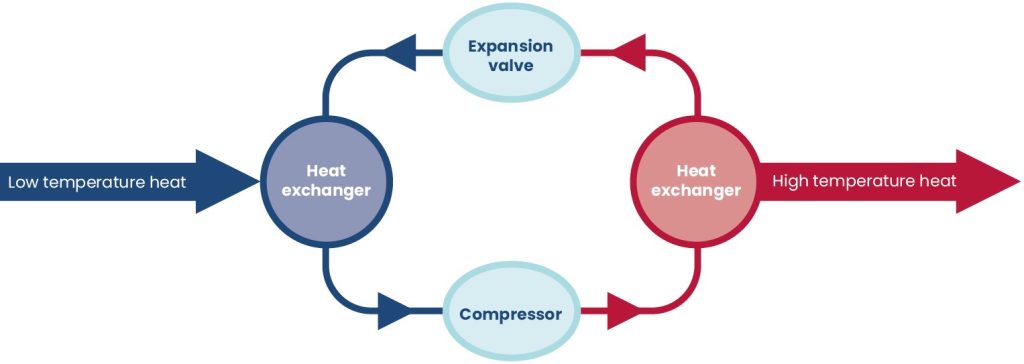1.1. What is a heat pump?
Learn how a heat pump operates.
Everything around us contains thermal energy or heat, and heat naturally flows from a warmer place to a colder place. In order to provide heat in a home, when outdoor temperatures are colder we need heat to flow in the other direction from a colder place to a warmer place.
When the pressure of a gas increases, the temperature also increases. When the pressure decreases, the temperature decreases. This relationship between pressure and temperature is the key to how a heat pump works.
Heat pumps use electricity to transfer heat from the outside air (air-to-water) or surrounding ground/water (ground-to-water) and the heat is then transferred to the central heating system. It could also use warm air in either an air-to-air heat pump or an exhaust air heat pump.
For every unit of electricity used to generate heat, 2.5 – 4 units of heat are produced. This is the Coefficient of Performance (CoP). Heat pumps can be low or high flow temperature systems.

Heat exchanger/evaporator – takes the heat from the air.
Compressor – moves the refrigerant around the heat pump and compresses the gaseous refrigerant to the temperature needed for the heat distribution circuit.
Heat exchanger/condenser – gives up heat to the central heating system.